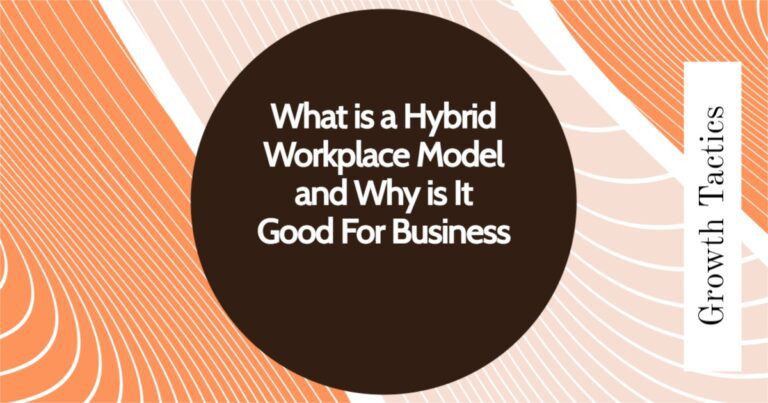Porter’s Five Forces is a strategic framework for industry competition analysis. It examines five key forces: competitive rivalry, bargaining power of suppliers and buyers, threats of new entrants, and the threat of substitutes.
Jump To Section
What Is Porter’s Five Forces?

Porter’s Five Forces is a classic strategic analysis framework. Created by Michael E. Porter, an influential professor at the Harvard Business School, it first appeared in 1979. The intent of this analysis is to determine the level of competition within an industry.
This tool is often used by businesses to analyze the competitive market structure and identify areas of opportunity or potential threat. Conducting this analysis provides clarity on external influences, allowing organizations to equip themselves to make the most informed decisions possible in extremely competitive environments.
It achieves this by analyzing five fundamental forces that influence competitive dynamics within a market. This model provides an invaluable framework for companies to identify the most important profit drivers and consider their impact to make better strategic decisions. Today, it’s a widely used tool across all industries, providing deep insights into traditional and digital markets alike.
Purpose of Porter’s Five Forces Analysis
The framework’s overall goal is to pinpoint factors that influence the profitability of an industry. By identifying industry competitive pressures, it allows companies to predict potential threats, identify opportunities, and create long-term strategies.
Knowing what the barriers to entry are, such as patents, network effects, or economies of scale is important. It can help you identify threats from future market entrants. By taking a proactive approach to this analysis, organizations can ensure that they are better positioned within their markets.
Why It Remains Relevant Today
Even though it’s more than four decades old, Porter’s Five Forces still manages to transform itself to the ever-changing industries. Its principles are just as relevant to legacy industries, including manufacturing, as they are to cutting-edge sectors, like e-commerce.
The Five Forces Explained

Let’s take a look at each of the 5 forces in more detail.
1. Competitive Rivalry Among Existing Players
The intensity of competition between established businesses significantly influences market dynamics. The intensity of this rivalry is determined by factors like the number of competitors, market growth, and product differentiation.
Take the example of the airline industry where aggressive pricing and undercutting marketing strategies regularly cut into profitability. In contrast, industries with products that are unique or where there are high switching costs face much less intense rivalry.
Key elements driving competition include:
- Market growth rate: Slower growth often increases competition.
- Product differentiation: Unique offerings can reduce direct rivalry.
- Switching costs: High costs discourage customers from changing providers.
2. Threat of New Entrants to the Market
Industries with low barriers to entry are always at risk of being disrupted by new incumbents. Economies of scale, brand loyalty, and high costs of entry into the market serve as powerful deterrents.
For instance, think about a landscaping business. All you need is a lawn mower and some yard tools and you can start a landscaping business. The barrier to entry is very low. Established brands use their brand awareness and scale to stay ahead, preventing new, smaller entrants.
3. Bargaining Power of Suppliers
When there are few suppliers, they can have a lot of power over prices and conditions. The automotive industry is a great example of this, in that unique parts from specific suppliers drive up expenses.
To avoid this, companies either try to have multiple suppliers or develop long-term relationships.
4. Bargaining Power of Buyers
Strong buyer power occurs when consumers can readily compare substitutes, similar to the strong buyer power found in the electronics industry.
Loyalty programs and personalized value creation work to mitigate this pressure, protecting margins.
5. Threat of Substitute Products or Services
Substitutes change consumer tastes and preferences and put a cap on your price-setting power. In the case of drinks, for example, coffee, tea and energy drinks are all substitutes for each other.
Innovation and differentiation can help keep the threat of substitution at bay.
|
Industry |
Substitute Examples |
|---|---|
|
Beverage |
Coffee vs. tea |
|
Transportation |
Ridesharing apps vs. taxis |
|
Energy |
Solar vs. traditional fuels |
Why Porter’s Five Forces Matter in Business Strategy

Porter’s Five Forces framework is one of the bedrock ideas for understanding industry dynamics and creating winning business strategies. Companies get a clear framework for understanding outside forces and their ability to make a profit.
This model goes beyond simply pointing out challenges, helping you to find the opportunities that lead to long-term progress and realignment with your goals.
Understanding Industry Profitability
The five forces, taken together, determine an industry’s overall profit potential. High supplier power and/or strong customer bargaining can further squeeze margins. A lack of effective substitutes or strong barriers to entry can set the stage for highly profitable environments.
Businesses leverage this analysis to understand cost structures and market demand, enabling them to identify and carve out profitable niches. For instance, a business looking to compete in the renewable energy space would want to understand supplier forces so they could establish favorable agreements.
This knowledge further helps investors judge industry attractiveness prior to investing money and time.
Identifying Competitive Pressures
Each force presents different hurdles. Rivalry among competitors may drive price wars, while new entrants can disrupt market share. Take the example of the tech sector where generally a high level of competition prevails with fast-moving innovation cycles.
Understanding competitor strategies allows businesses to anticipate moves and adapt. Retailers, for example, mitigate buyer power by offering loyalty programs to retain customers, especially in industries prone to price sensitivity.
Guiding Strategic Decision-Making
Porter’s Five Forces deepens understanding of competitive forces and helps companies find ways to align their strategies with market realities. By pinpointing where they’ll have the most impact, it helps decision-makers prioritize investments, including fortifying barriers to entry.
Companies can use the framework to identify strategic opportunities as well, such as focusing on expansion into underserved segments. A new entrant food delivery company, for example, could focus its strategy on competing on speed and invest accordingly.
It might establish proprietary alliances, creating a sustainable advantage.
Enhancing Long-Term Business Sustainability
While sustainability is built on the pillar of resilience, Porter’s model helps to achieve this through the encouragement of innovation and differentiation. Through the substitute threats analysis, companies focus on product differentiation, such as what streaming platforms have done recently by investing in original programming to keep subscribers.
The collaborative framework identifies creative partnership opportunities, like joint ventures, to mitigate powerful suppliers’ stronghold. Ultimately, it helps companies stay on top of competition even as market conditions change.
Applying Porter’s Five Forces to Different Industries

Porter’s Five Forces framework is still one of the foundational models for understanding industry structures and is applicable to nearly every sector. Its versatility is what makes it so beneficial in both established and developing markets, where conditions are constantly changing.
Adapting the Model to Industry-Specific Factors
Industries are incredibly different in structure, which shapes how the Five Forces are applied. To take one example, in technology-driven sectors, innovation cycles and intellectual property rights play a large role in rivalry and barriers. In commodity industries such as agriculture, the distribution of power with suppliers and buyers is the emphasis.
Companies need to focus the forces on what creates competitive action within their industry. For example:
- Regulatory environment: Healthcare and finance face strict compliance demands.
- Supply chain complexity: Automotive or electronics industries depend on global suppliers.
- Consumer behavior: Retail and fashion rely on shifting trends.
- Market maturity: Startups face different pressures compared to established players.
Insights for Emerging Markets and Digital Industries
Digital industries complicate the picture further by upending traditional models through fast-paced innovation and evolving customer needs. Digital platforms such as e-commerce radically change the dynamic of buyer power.
Emerging markets require tailored strategies because of a lack of resources and inconsistency in regulations. Agility is key, because digital and emerging markets change rapidly, often changing the nature of competitive forces.
Criticisms and Limitations of Porter’s Five Forces
Porter’s Five Forces is foundational in the strategic analysis but has some drawbacks, particularly given today’s rapidly changing business environment. To appreciate its limitations, look at its inflexibility. Overemphasis of static competition and difficulty in applying to today’s tech-focused industries.
Lack of Flexibility in Rapidly Changing Markets
Due to a heavy dependence on historical data, the model is frequently ill-equipped for industry sectors that are in a state of flux. For example, innovations that are disruptive such as electric vehicles or AI-powered solutions can turn markets upside down much quicker than the model accounts for.
Porter’s Five Forces provides a pretty static view of competitive forces. It fails to account for the dynamic nature of today’s industries, in which the ability to derive real-time insights is essential. The model doesn’t consider the impact of external shocks. As we have all seen with global pandemics or other geopolitical events, market dynamics can change overnight.
Overemphasis on Static Competition
Porter’s framework places a heavy emphasis on competition among current players. In doing so, it misses the growth of collaborative competition, like joint ventures or ecosystem alliances. This is especially true when industries contours become fuzzy. Imagine the surprise when media conglomerates started merging with tech companies or retail behemoths acquired logistics firms.
Emerging non-traditional competitors like small-scale disruptors are therefore frequently left out of the analysis, reducing its applicability in dynamic industries.
Challenges in Digital and Technology-Driven Sectors
In this digital era, industries are influenced by intangibles such as data, algorithms, and IP. These factors are difficult to measure within the Five Forces structure.
This is a particularly challenging analysis to undertake given the rapid pace of innovation within the technology space. Complementary tools, like scenario planning or value chain analysis, are necessary to fill these gaps.
Conclusion
Porter’s Five Forces may have its critics, but it still provides powerful tools to help you understand your market landscape and inform your strategic choices. Through competition analysis, businesses can get a better understanding of their industry’s driving factors.
Whether you’re working within a mature industry or seeking opportunity in new sectors, don’t miss out! By leveraging it strategically and purposefully, you can set your business up to thrive for many years to come.

Frequently Asked Questions
What is Porter’s Five Forces?
It helps businesses understand market dynamics by evaluating five factors: competitive rivalry, supplier power, buyer power, the threat of substitutes, and the threat of new entrants.
Why is Porter’s Five Forces important for business strategy?
It helps you pinpoint the most important external factors impacting your profitability and competition. For businesses, it’s a powerful tool that can help them create effective business strategies, mitigate risks, and identify new avenues for growth within their industry.
How can Porter’s Five Forces be applied to different industries?
In tech, for instance, it can help evaluate threats to your innovation pipeline. In the case of retail, it could hone in on the supplier vs. Buyer dynamics.
What are the main benefits of using Porter’s Five Forces?
Overall, it’s a crucial tool in a business’s quest to understand their competition, evaluate risks, and ultimately make better informed decisions. The model takes complicated market dynamics and distills them into clear, actionable insights that can help inform your strategic planning.
What are the criticisms of Porter’s Five Forces?
For one, critics argue that it greatly oversimplifies markets and neglects the pace of change in today’s world, such as technology innovation. It’s oriented more toward competition than collaboration or outside influences such as government policy.
Can Porter’s Five Forces predict future industry trends?
Though not a predictive tool, it is a useful framework to analyze the present state of your market. Businesses can leverage it in combination with other tools to predict shifts and make proactive strategy adjustments that are necessary to thrive.
Is Porter’s Five Forces still relevant today?
Sometimes companies take it and mix it with new models to tackle today’s fast-paced, technology-heavy markets.







